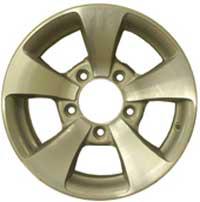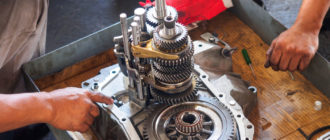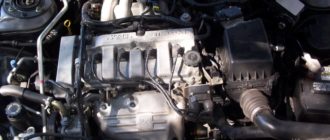Brake pads are an essential component of the brake system of your vehicle. They are responsible for providing the necessary friction to slow down and eventually stop your car. However, over time, brake pads wear out and need to be replaced to maintain optimum braking performance.
Replacing your brake pads is important not only for your safety but for the longevity of your car’s braking system. But how do you know when it’s time to replace your brake pads? The answer isn’t always clear, which is why we have created a comprehensive guide to help you navigate through the process.
In this article, we’ll cover the signs that indicate you need new brake pads, different types of brake pads, how to replace them, and tips for maintaining your brake system. So, whether you’re a seasoned driver or a new car owner, this guide will provide you with everything you need to know about replacing your brake pads.
Don’t risk your safety or your car’s performance by neglecting your brake pads. Keep reading to learn when and how to replace your brake pads and make sure your vehicle is always road-worthy.

source: https://sangsinusa.com/how-to-change-your-brake-pads/
Signs of Worn-out Brake Pads
As a responsible car owner, checking the condition of your brake pads regularly is one of the most critical tasks that you should not neglect. Having worn-out brake pads can cause significant damage and hazards to you and other motorists on the road. Here are some of the signs that you may observe, which can indicate that your brake pads need to be replaced:
- Noise: If you hear a squealing or grinding sound when you apply your brakes, it is usually an indication that your brake pads have worn out excessively.
- Vibration: If you feel a pulsing sensation when you apply the brakes, it may be due to warped brake rotors which can be caused by uneven wear on the brake pads.
- Reduced braking power: If your vehicle takes longer to stop or doesn’t stop as effectively as it usually does, you may need to replace your brake pads.
It is essential to note that brake pads wear out gradually over time, and the rate of wear can differ depending on the driver’s habits and road conditions. Therefore, it is essential to consult your mechanic or refer to your vehicle’s owner’s manual for recommended replacement intervals.
Replacing worn-out brake pads is a critical aspect of ensuring your vehicle’s safety and maintenance. It is always better to be safe than sorry, so don’t hesitate to get your brakes checked regularly.
Understanding the Factors that Affect Brake Pad Wear
Brake pads are an essential component of a vehicle’s braking system, and their wear can depend on several factors. One of the primary factors that affect brake pad wear is driving style. Aggressive driving, such as sudden braking, can cause the brake pads to wear out faster than usual. Additionally, driving in hilly areas or in heavy traffic can also accelerate brake pad wear.
The type of vehicle also plays a role in brake pad wear. Heavier vehicles, such as trucks and SUVs, require more stopping power, and thus their brake pads tend to wear out faster than those of lighter vehicles. Moreover, the type of brake pad material used can significantly influence its lifespan. Ceramic brake pads have a longer lifespan than metallic or organic brake pads.
The weather conditions in which a vehicle is driven can also accelerate brake pad wear. In areas with frequent rain or snow, the moisture or salt mixed with the road surface can cause the brake pads to wear out faster. Finally, the brake pad’s quality and brand can also impact its durability. Installing high-quality brake pads from reputable brands can ensure longer-lasting performance and reduce the need for frequent replacements.
- Conclusion: To determine when to replace your brake pads, it is important to consider the factors that affect their wear. Factors such as driving style, vehicle weight, brake pad material, weather conditions, and quality can all play a role in determining the lifespan of brake pads. Staying aware of these factors and replacing your brake pads before they wear out completely can help ensure safe driving and extend the life of your vehicle’s braking system.

source: https://www.ryannissan.com/service/service-tips/how-much-to-replace-brake-pads/
Understanding When It’s Time to Change Your Brake Pads
One of the most critical safety measures for any vehicle on the road is the braking system. Brake pads are a crucial component of this system, and they work by creating friction against the rotors or drum. Over time, brake pads wear out, and they need to be replaced. It’s essential to know when to replace your brake pads to keep your vehicle safe and avoid costly repairs in the long run.
There are several signs that indicate it’s time to replace your brake pads. One of the most common indicators is a squeaking or grinding noise when braking. If you hear a high-pitched squeal or grinding noise when you apply the brakes, it’s a clear sign that your brake pads are worn out and need to be replaced immediately. It’s also essential to pay attention to the brake pedal’s feel. If your brake pedal feels soft or spongy, it could indicate that your brake pads are worn out.
- Another sign that you need new brake pads is if you notice a vibration or pulsation when applying the brakes.
- If you find that your vehicle takes longer to stop than it used to, or if the braking distance has increased, it’s a clear indication that your brake pads need to be replaced.
- You may also notice that your brake pads look worn or thin when you inspect them. If the brake pads are less than 1/4 inch thick, it’s time to replace them.
Replacing brake pads is essential for your safety on the road. If you notice any of the signs mentioned above, it’s crucial to have your brake system inspected and repaired by a certified technician. It’s always better to be safe than sorry when it comes to your brakes, and replacing brake pads at the first sign of wear can save you money and ensure your safety on the road.
When to Replace Your Brake Pads?
Knowing when to replace your brake pads is important for safe driving. There are a few signs that indicate your brake pads need to be replaced. The first is if you hear a squeaking or grinding noise when you apply your brakes. This noise is caused by the brake pad wear indicator, a small piece of metal that makes contact with the rotor when the pads are worn down.
Another sign is if your brake pedal feels soft or spongy when you press it. This could indicate that your brake pads are worn down, causing the pedal to sink closer to the floor. Additionally, if your car takes longer to stop than usual or pulls to one side when braking, it’s time to get your brake pads inspected and potentially replaced.
It’s important to replace your brake pads before they are completely worn down to avoid damage to your braking system and ensure your safety while driving.
How to Replace Your Brake Pads?
If you’re experiencing any of the above signs and suspect that it’s time to replace your brake pads, it’s important to take action. Here’s how to replace your brake pads:
- Start by purchasing the correct brake pads for your car. Consult your owner’s manual or ask a trusted mechanic for recommendations.
- Jack up the car and remove the wheel to access the brakes.
- Remove the caliper and brake pads.
- Inspect the rotor for any damage or wear and replace if necessary.
- Install the new brake pads and reassemble the caliper.
- Repeat the process for the other side of the car.
- Test the brakes to ensure they are working correctly.
If you’re not comfortable with tackling this job yourself, it’s always best to take your car to a trusted mechanic to ensure the job is done correctly.
The most common signs that it's time to replace your brake pads include a squeaking or grinding sound when you apply the brakes and a decreased ability to stop quickly. You should also visually inspect your brake pads regularly to check their thickness. If they are less than a quarter of an inch thick, it's time for new pads.
The type of brake pads to use depends on a few factors, such as your vehicle's make and model, your driving style, and your budget. There are three main types of brake pads: ceramic, semi-metallic, and organic. Ceramic brake pads are quieter but more expensive, while semi-metallic pads are cheaper but noisier. Organic pads offer a good balance between noise and cost.
It's recommended to replace your brake pads every 25,000-50,000 miles, but this can vary depending on your driving style, the type of brake pads you use, and other factors. It's important to have your brake pads inspected regularly and replaced when necessary to ensure your vehicle can stop safely and quickly.
If you don't replace your brake pads when they're worn down, it can cause damage to your brake rotors and reduce your vehicle's ability to stop quickly. This can be dangerous, especially in emergency situations. In addition, the longer you wait to replace your brake pads, the more expensive the repair will be.
Yes, it is possible to replace your own brake pads if you are familiar with your vehicle's braking system and have the necessary tools. However, it's important to follow the manufacturer's recommendations and pay attention to proper installation techniques to ensure your brakes work effectively.
The cost of replacing your brake pads can vary based on the type of pads you choose, the make and model of your vehicle, and your location. On average, you can expect to pay anywhere from $100 to $300 for a full brake pad replacement job.






